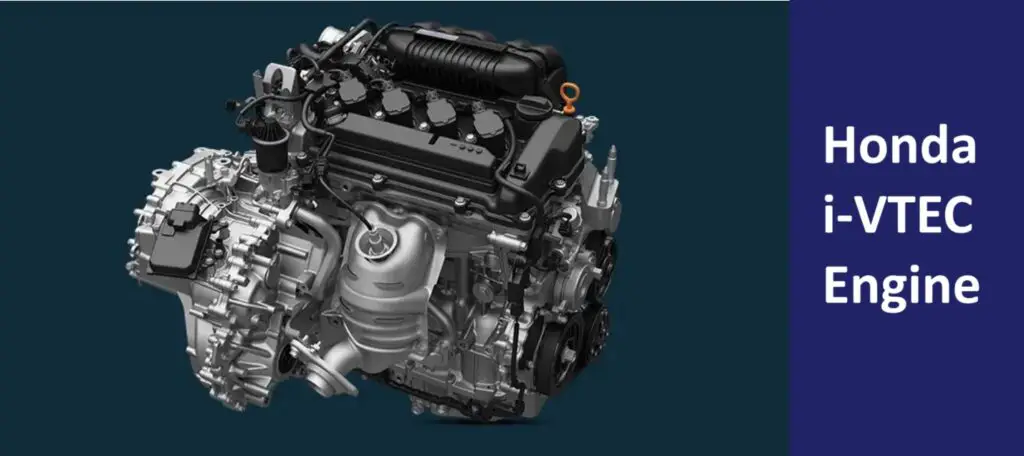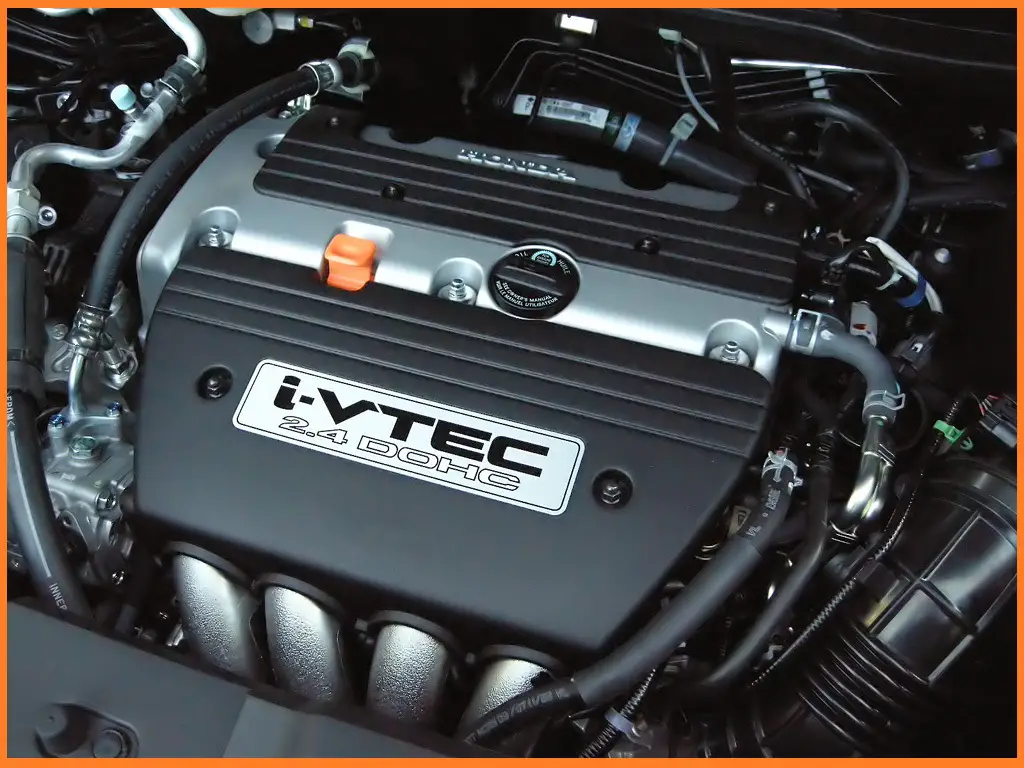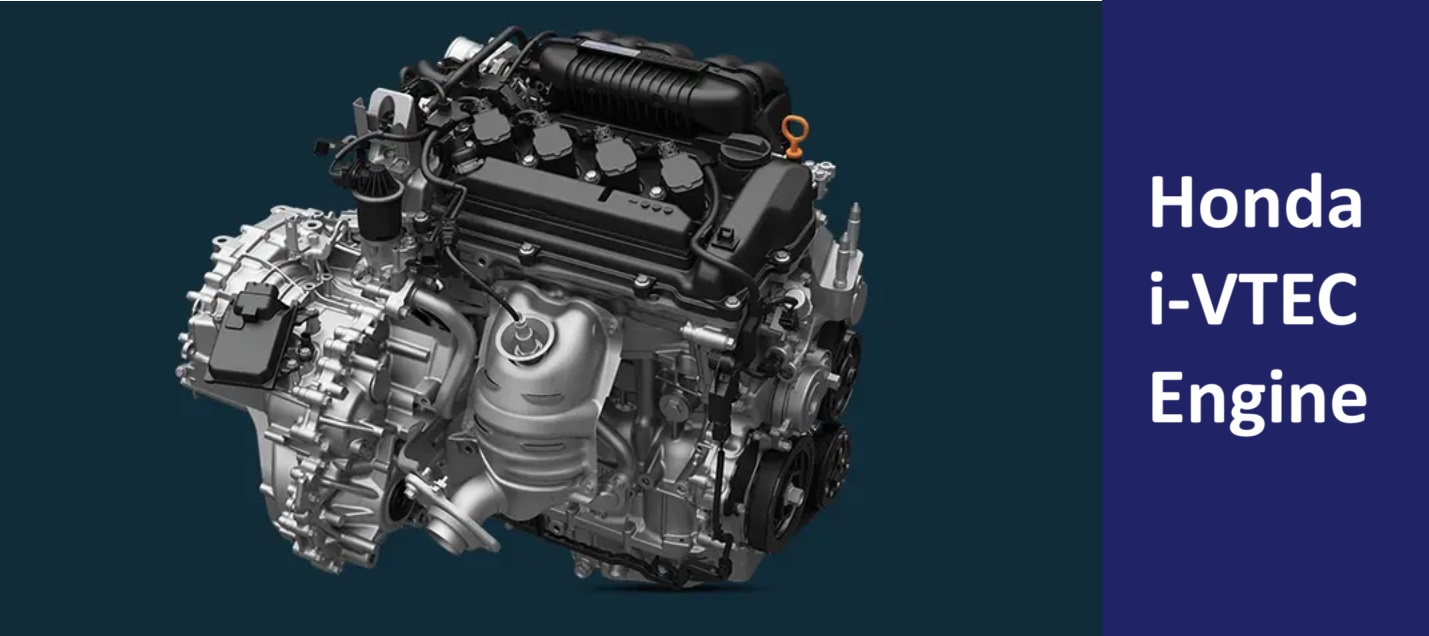Built by Honda Motor Company, the i-VTEC engine is a revolutionary piece of technology that offers unmatched performance and fuel efficiency. Whether you’re a car enthusiast or just curious about how engines work, this article will provide you with all the essential information about the i-VTEC engine and why it has become a game-changer in the automotive industry. So, let’s get started and uncover the secrets behind this remarkable piece of engineering.

Image Credits – Honda India
What is i-VTEC Engine?
Definition of i-VTEC Engine
The i-VTEC (Intelligent Variable Valve Timing and Lift Electronic Control) Engine is a technology developed by Honda Motor Company. It is a type of variable valve timing (VVT) system that optimizes the engine’s valves for improved efficiency, power, and fuel economy. The i-VTEC system employs advanced electronic control to continuously adjust the timing of the intake and exhaust valves to achieve optimal performance under different driving conditions.
How does i-VTEC Engine work?
The i-VTEC Engine uses a combination of hydraulic and electronic control systems to vary the valve timing and lift. At low engine speeds and when operating under light loads, the i-VTEC system reduces valve lift to improve fuel efficiency. This is achieved by using a low-lift cam profile. At higher speeds and when more power is needed, the system switches to a high-lift cam profile, allowing more air and fuel to enter the engine for increased power output. The intelligent control system ensures smooth transitions between the low and high lift modes, providing a seamless driving experience.
Advantages of i-VTEC Engine
The i-VTEC Engine offers several advantages over traditional engines. One of the key advantages is improved fuel efficiency. By optimizing the valve timing and lift, the i-VTEC system allows the engine to operate more efficiently, reducing fuel consumption and carbon emissions. Additionally, the i-VTEC Engine delivers increased power and performance, allowing for quicker acceleration and improved overall driving dynamics. Furthermore, the i-VTEC system helps to reduce emissions by controlling the combustion process and ensuring efficient fuel combustion. Lastly, the smooth and responsive engine performance of the i-VTEC Engine enhances the driving experience and provides a greater sense of control on the road.
Disadvantages of i-VTEC Engine
While the i-VTEC Engine has many benefits, there are a few drawbacks to consider. One of the main disadvantages is the complexity of the system. The i-VTEC system requires advanced electronic control and hydraulic components, which can increase the cost of production and maintenance. Additionally, the system may be more prone to mechanical failures or malfunctions compared to simpler engine designs. Another potential drawback is the reliance on specific Honda engine technology. As the i-VTEC system is unique to Honda, it can be more challenging to find specialized parts or mechanics for repairs or maintenance.

History of i-VTEC Engine
Development of i-VTEC Engine
The development of the i-VTEC Engine started in the late 1980s when Honda engineers sought to improve upon their existing VTEC technology. The goal was to create an even more efficient and powerful engine that would meet increasingly stringent emission standards. Extensive research and development were carried out to refine the VTEC system and add intelligent control capabilities. After years of testing and optimization, Honda successfully introduced the i-VTEC Engine in the late 1990s.
Evolution of i-VTEC Engine
Since its introduction, the i-VTEC Engine has undergone continuous refinement and improvement. Honda engineers have focused on enhancing the system’s performance, reliability, and fuel efficiency. With each new iteration, advancements have been made in electronic control, valve timing precision, and combustion efficiency. The evolution of the i-VTEC Engine has resulted in more refined and responsive engines, delivering an optimal balance between power and efficiency.
Improvements over previous engine technologies
The i-VTEC Engine represents a significant advancement over previous engine technologies, including conventional engines and earlier versions of Honda’s VTEC system. By combining variable valve timing with lift control and advanced electronic control, the i-VTEC system offers superior performance and efficiency. Compared to traditional fixed-valve timing systems, the i-VTEC Engine provides better power output across a wider range of engine speeds. Additionally, the intelligent control of the i-VTEC system ensures smooth transitions between different valve lift profiles, eliminating the abrupt power delivery that was sometimes experienced with earlier VTEC engines.
Features of i-VTEC Engine
Variable Valve Timing and Lift Electronic Control (VTEC)
At the heart of the i-VTEC Engine is the Variable Valve Timing and Lift Electronic Control, or VTEC. This technology allows for the adjustment of valve timing and lift based on driving conditions. By varying the timing of the intake and exhaust valves, the VTEC system optimizes engine performance, improving power, efficiency, and emissions. The VTEC system uses hydraulic mechanisms and solenoids to engage different cam lobes, which control the valve lift and duration based on the engine’s needs.
Intelligent Variable Valve Timing and Lift Electronic Control (i-VTEC)
Building upon the VTEC technology, Honda introduced the i-VTEC system to further enhance engine performance. The i-VTEC system adds intelligent control capabilities to the VTEC system, allowing for even finer adjustment of the valve timing and lift. This intelligent control system continuously monitors various engine parameters, including engine speed, throttle position, coolant temperature, and more, to determine the optimal valve timing and lift for the current driving conditions. By dynamically adjusting the valve profile, the i-VTEC Engine can deliver improved fuel efficiency at low speeds and increased power at high speeds.
Fuel Injection System
The i-VTEC Engine incorporates a state-of-the-art fuel injection system to ensure precise delivery of fuel into the combustion chamber. This system uses electronically controlled fuel injectors that are capable of delivering the fuel in precise amounts and at the ideal timing. This helps to optimize combustion efficiency and reduce fuel consumption. The fuel injection system works in conjunction with the i-VTEC system to provide exceptional performance and fuel economy.
Lightweight Design
To further improve the overall performance of the i-VTEC Engine, Honda engineers have focused on reducing the weight of engine components. Lightweight materials, such as aluminum, are used for key components like the cylinder head and block, pistons, and connecting rods. This lightweight design reduces the overall mass of the engine, resulting in improved acceleration, handling, and fuel efficiency. The use of lightweight materials also helps to reduce rotational inertia, enhancing engine responsiveness.
Low Friction Technology
Another important feature of the i-VTEC Engine is the incorporation of low friction technology. Honda has implemented various measures to minimize internal friction within the engine, reducing energy losses and improving efficiency. For example, low-friction piston rings, roller cam followers, and optimized bearing surfaces are utilized to minimize friction between moving parts. This results in smoother engine operation, reduced wear and tear, and improved fuel economy.
Benefits of i-VTEC Engine
Improved Fuel Efficiency
One of the major benefits of the i-VTEC Engine is its improved fuel efficiency. The intelligent control system monitors driving conditions and adjusts the valve timing and lift to optimize fuel combustion. By precisely controlling the amount of air and fuel entering the combustion chamber, the i-VTEC Engine can achieve higher combustion efficiency, ultimately reducing fuel consumption. This translates to better fuel economy, saving drivers money at the pump and reducing their environmental impact.
Increased Power and Performance
The i-VTEC Engine delivers enhanced power and performance compared to traditional engine designs. The ability to vary the valve timing and lift allows the engine to deliver optimal power output across a wide range of engine speeds. This results in improved acceleration, responsiveness, and overall driving dynamics. Whether cruising on the highway or tackling tight turns, the i-VTEC Engine provides an exhilarating driving experience.
Reduced Emissions
With growing concerns over environmental pollution, reducing emissions is a key consideration for engine technology. The i-VTEC Engine helps address this concern by controlling the combustion process. By optimizing the valve timing and lift, the i-VTEC system ensures efficient fuel combustion, reducing the production of harmful emissions. The intelligent control system continuously monitors the engine’s operating parameters to maintain optimal combustion and minimize emissions, making the i-VTEC Engine compliant with stringent emission standards.
Smooth and Responsive Engine Performance
The intelligent control and variable valve timing capabilities of the i-VTEC Engine result in a smooth and responsive engine performance. The transitions between the low-lift and high-lift cam profiles are seamless, ensuring a steady and consistent power delivery. This smoothness enhances the overall driving experience, providing drivers with confidence and control. Whether cruising at low speeds or pushing the engine to its limits, the i-VTEC Engine provides a satisfying and engaging performance.
Applications of i-VTEC Engine
In Honda Passenger Cars
The i-VTEC Engine has found widespread application in Honda cars. It can be found in a range of models, from compact sedans to high-performance sports cars. The versatility of the i-VTEC Engine allows Honda to tailor the engine’s characteristics to suit the specific needs of each vehicle. Whether drivers are looking for fuel efficiency, power, or a balance of both, Honda’s i-VTEC Engine delivers a reliable and satisfying performance.
In Honda Racing Cars
The i-VTEC Engine has also made its way into Honda’s racing cars, showcasing its capabilities in high-performance and competitive environments. Honda’s racing division has utilized the i-VTEC technology to develop powerful and efficient engines for various motorsports disciplines. The i-VTEC Engine’s ability to deliver high power output and precise control makes it a valuable asset in racing applications, where performance and reliability are paramount.
In Honda Motorcycles
Honda has extended the benefits of the i-VTEC Engine technology to its motorcycle lineup as well. The i-VTEC system has been incorporated into a range of Honda motorcycles, enhancing their performance and fuel efficiency. Whether riders are cruising on the open road or exploring off-road trails, the i-VTEC Engine provides the power and responsiveness needed to enjoy every ride. The application of i-VTEC in motorcycles demonstrates Honda’s commitment to innovation across its entire product range.
Maintenance and Care for i-VTEC Engine
Regular Oil Changes
To maintain the optimal performance and longevity of the i-VTEC Engine, regular oil changes are essential. Oil lubricates the engine’s moving parts and helps to dissipate heat. Over time, oil can become contaminated with dirt, debris, and combustion by-products, reducing its effectiveness. Regularly changing the oil at the recommended intervals ensures that the engine is properly lubricated and protected from excessive wear.
Proper Filter Maintenance
In addition to oil changes, proper maintenance of the engine’s filters is crucial. The air filter and fuel filter should be inspected and replaced as needed to prevent any contaminants from reaching the engine. A clean air filter allows for optimal airflow, while a clean fuel filter ensures that the fuel entering the engine is free from impurities that could affect combustion and performance.
Timely Spark Plug Replacement
Spark plugs play a vital role in the combustion process of the i-VTEC Engine. Over time, spark plugs can wear out, leading to reduced performance and fuel efficiency. Regularly inspecting and replacing spark plugs at the recommended intervals will help maintain the engine’s optimal performance and ensure efficient fuel combustion.
Maintaining Optimal Engine Temperature
Proper engine temperature regulation is important for the i-VTEC Engine’s performance and longevity. The engine’s cooling system, including the radiator, thermostat, and coolant, should be regularly inspected and maintained. Coolant levels should be checked and topped up as needed to prevent overheating, which can lead to engine damage and decreased performance.
Ensuring Proper Air Flow
The intake and exhaust systems of the i-VTEC Engine should be regularly inspected to ensure proper air flow. Air filters should be clean and free from any obstructions to allow the engine to breathe freely. Additionally, the exhaust system should be free from leaks or restrictions that could affect engine performance and emissions.
Common Issues with i-VTEC Engine
Oil Leaks
Oil leaks can occur in the i-VTEC Engine, mainly due to worn gaskets or seal failures. It is important to address oil leaks promptly to prevent damage to engine components and ensure proper lubrication. Regular inspection of the engine for signs of oil leaks, such as oil spots under the vehicle or a noticeable decrease in oil levels, can help identify and resolve these issues.
VTEC Solenoid Malfunction
The VTEC solenoid is a crucial component of the i-VTEC Engine, controlling the engagement of the low and high lift cam profiles. If the VTEC solenoid malfunctions or becomes stuck, it can result in a loss of engine power or rough running. Timely diagnosis and replacement of a faulty VTEC solenoid can help restore proper engine performance.
Timing Chain Tensioner Failure
The timing chain tensioner in the i-VTEC Engine is responsible for maintaining proper tension in the engine’s timing chain. Over time, the tensioner may wear out or become damaged, leading to timing chain slack and potential engine damage. Regular inspection and maintenance of the timing chain tensioner can help prevent costly repairs and ensure the engine’s longevity.
Valve Clearance Issues
Valve clearance refers to the gap between the valves and the rocker arms within the engine. If the valve clearance becomes too tight or too loose, it can affect engine performance, cause noise, and potentially lead to valve damage. Regular valve clearance inspections and adjustments, as recommended by the manufacturer, are necessary to maintain optimal engine performance.
Carbon Build-Up
Carbon deposits can accumulate on the intake valves, intake manifold, and throttle body over time. These deposits can restrict airflow and negatively impact engine performance. Regular maintenance, including carbon cleaning treatments and intake system inspections, can help prevent the build-up of carbon deposits and maintain the optimal performance of the i-VTEC Engine.
Comparisons with Other Engine Technologies
i-VTEC vs VVT
VVT (Variable Valve Timing) is a general term for engine technologies that adjust the timing of the intake and exhaust valves. While i-VTEC is a specific implementation of VVT developed by Honda, the two technologies serve similar purposes. However, i-VTEC goes a step further by incorporating intelligent control and continuously variable lift capabilities, resulting in improved efficiency and performance compared to traditional VVT systems.
i-VTEC vs VTEC
VTEC (Variable Valve Timing and Lift Electronic Control) is the predecessor to the i-VTEC Engine. While both systems feature variable valve timing, the main difference lies in the ability of the i-VTEC system to vary valve lift as well. The addition of variable lift allows the i-VTEC Engine to optimize power and efficiency across a wider range of engine speeds. The i-VTEC system also incorporates more advanced electronic control, further enhancing its performance and responsiveness compared to the earlier VTEC technology.
i-VTEC vs EcoBoost
EcoBoost is a line of turbocharged gasoline engines developed by Ford Motor Company. While both i-VTEC and EcoBoost engines aim to improve fuel efficiency and performance, they utilize different technologies to achieve these goals. The i-VTEC Engine focuses on optimizing valve timing and lift, while EcoBoost engines rely on turbocharging and direct fuel injection to enhance efficiency and power output. Both technologies have their merits and are suited to different driving preferences and requirements.
i-VTEC vs SkyActiv
SkyActiv is a suite of engine technologies developed by Mazda that aims to improve fuel efficiency and performance. Like i-VTEC, SkyActiv utilizes advanced engineering techniques and electronic control systems to optimize engine operation. While specific implementation details vary, both i-VTEC and SkyActiv engines prioritize efficiency and performance through careful optimization of combustion, transmission, and weight reduction. The choice between the two technologies ultimately depends on individual preferences and the specific vehicle models in consideration.
Future Developments of i-VTEC Engine
Electrification and Hybridization
As the automotive industry continues to evolve, the i-VTEC Engine is expected to progress alongside advancements in electrification and hybridization. Hybrid powertrains, which combine internal combustion engines with electric propulsion, provide an opportunity to further enhance the efficiency and performance of i-VTEC engines. The integration of electric motors and battery systems can complement the i-VTEC Engine, offering even greater fuel efficiency and reduced emissions.
Integration with Advanced Driver Assistance Systems
The future of i-VTEC Engine technology may involve integration with advanced driver assistance systems (ADAS). By combining the intelligent control capabilities of i-VTEC with ADAS technologies, such as adaptive cruise control and lane-keeping assist, Honda can create more intelligent and efficient powertrains. The integration of i-VTEC with ADAS can help optimize engine performance based on real-time traffic conditions, further improving fuel efficiency and overall driving comfort.
Efficiency Improvements
Continued improvement in fuel efficiency is an ongoing focus for engine manufacturers, and the i-VTEC Engine is no exception. Honda will likely continue to refine the i-VTEC system, incorporating advancements in materials, combustion processes, and control systems to achieve even greater efficiency. As emission standards become more stringent and environmental concerns grow, the i-VTEC Engine will play a crucial role in Honda’s efforts to reduce the carbon footprint of its vehicles while delivering exceptional performance.
Conclusion
The i-VTEC Engine represents a milestone in engine technology, combining the benefits of variable valve timing and lift control with intelligent electronic control. With its ability to optimize power, efficiency, and emissions across a wide range of driving conditions, the i-VTEC Engine has become a cornerstone of Honda’s engine lineup. Whether powering Honda’s passenger cars, racing cars, or motorcycles, the i-VTEC Engine delivers an exceptional driving experience. With ongoing advancements and future developments, the i-VTEC Engine is poised to continue evolving, ensuring Honda remains at the forefront of automotive technology.
i-VTEC Video
Mechanical Engineer by Education. Writer by passion. Fortunate to combine passion and education. Huge F1 Addict and adventure head. You can find me in the mountains on the weekend.

